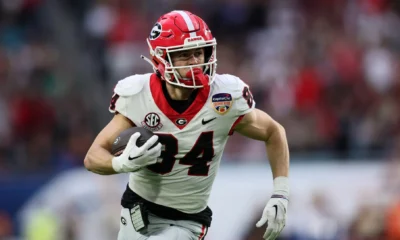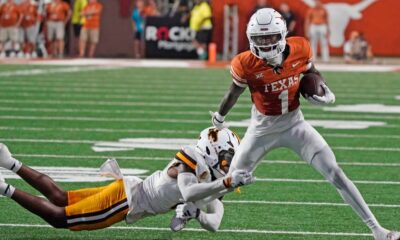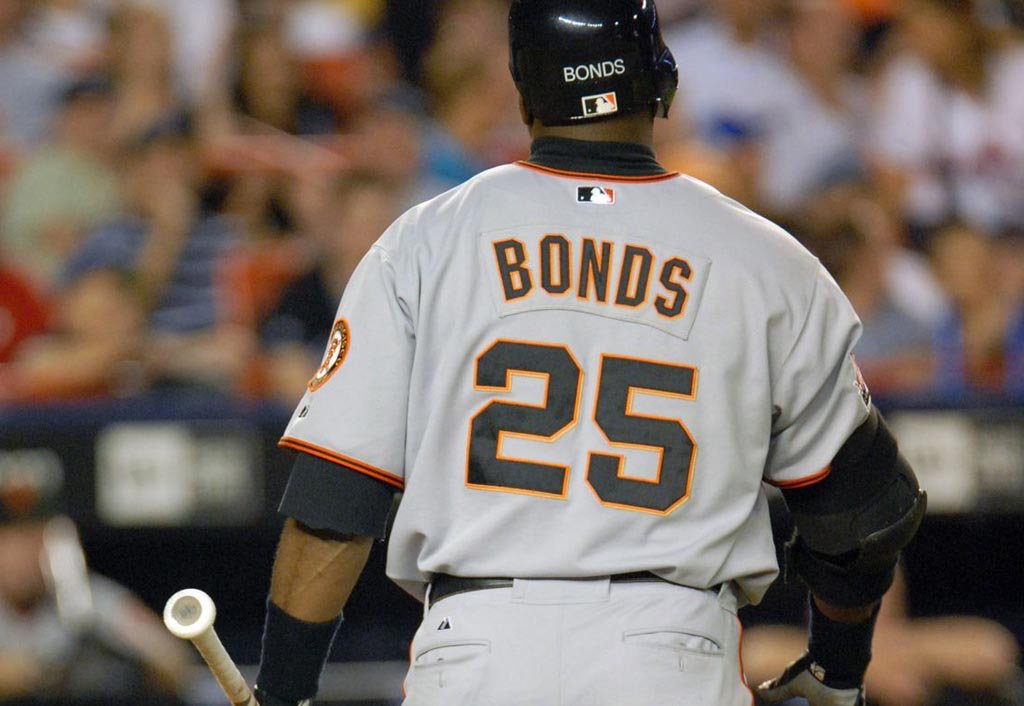
MLB announced on Tuesday that for the first time since 1960, and just the seventh time since 1936, no new members were inducted into the Baseball Hall of Fame. With controversy, sportsmanship and the game’s integrity on the ballot like never before, there were no clear guarantees on this year’s ballot. This year did not feature any definite first-time inductees. Of the 25 players on the ballot, here is a look at the ones who got closest to the 75% mark required to be inducted.
Curt Schilling: 71.1%
Years Left Of Eligibility: 1
A member of baseball’s exclusive 3,000+ strikeout fraternity, Curt Schilling had a career strikeout to walk ratio of 4.38 and career 1.13 WHIP. Additionally, Schilling put up postseason performances for the ages which make Schilling look like a no-brainer on paper. So what’s keeping him from the hall?
Character issues. Due to controversial political tweets during his retirement, Schilling once again fell short of attaining baseball’s highest honor this year by a narrow 16 votes, getting a slight bump of one percentage point from last year’s 71.1% to 70% this time around. With only one more year of eligibility left, will Schilling get those crucial votes?
Well for the first time ever, a player requested to be taken off the ballot. Yes, unsurprisingly Schilling has now lost faith in even the Baseball Writers Association of America. According to MLB Network, immediately following his Hall of Fame rejection, Schilling wrote a letter saying,
“I will not participate in the final year of voting. I am requesting to be removed from the ballot. I’ll defer to the veterans committee and men whose opinions actually matter and who are in a position to actually judge a player.” The BBWA responded on Wednesday that they will not even consider removing Schilling from their ballot.
According to Matt Snyder of CBS Sports the BBWA’s secretary/treasurer Jack O’Connell issued the following statement, “It is the position of the Baseball Writers’ Association of America that Mr. Schilling’s request to remove himself from the ballot is a violation of the rules set forth by the National Baseball Hall of Fame’s board of directors.”
This will only add heat to the fire in his relationship with the baseball writers, let alone help his final Hall of Fame outlook.
Barry Bonds: 61.8%
Years Left Of Eligibility: 1
Barry Bonds again fell short in his second-to-last year of eligibility. He is Major League Baseball’s all time home run leader. And due to his use of performance enhancing drugs, Bonds did not make major strides towards getting into the hall like some may have anticipated. With only one year of eligibility left, his hall of fame chances now look especially grim. Bonds not cracking the 75% understandably comes as a shocker to some. Especially after seeing how MLB handled the most recent cheating scandal with the Houston Astros by issuing minimal punishments to the players involved. Furthermore, four years ago we saw former Commissioner Bud Selig receive an induction. He was the one overseeing baseball during the steroids era.
This might have been the year for Bonds’ fate to change if ever, especially given that he received a promising 73.5% of the vote on the initial public ballots. But a miniscule increase of just one percent from last year does not make Bonds final prospects look optimal.
Roger Clemens: 61.6%
Years Left Of Eligibility: 1
Like Bonds, Roger Clemens had a very controversial career. One that was marred by steroid use as the only factor hampering his chances at Cooperstown. Like Schilling, Clemens numbers are clearly over the top as one of baseball’s elite to take the mound. Clemens is a member of the even more exclusive 4,000+ strikeout club and holds a record seven Cy Young awards. With Clemens numbers looking so symmetrical to those of Bonds, their fates are intertwined. The 2022 vote will make or break whether the BBWAA elects them.
Scott Rolen: 52.9%
Years Left Of Eligibility: 6
Of the players who did not make it this year that still have hope for a future Hall of Fame bid, Scott Rolen is the one who should feel the most optimistic. The eight-time Gold-Glove award winner and seven-time All-Star jumped from 35.3% of the vote last year to 52.9% of the vote this year. With increased awareness of WAR and the voters looking more into scarcity at certain positions like third base, the prospects of him getting in should only continue to rise. The question is by how much. According to Baseball Reference’s JAWS (Jaffe War Score system), which measures a player’s peak WAR as compared to others at the position, Rolen ranks right in the top 15, among third basemen at number 10. This could make his case even more compelling.
Omar Vizquel 49.1%
Years Left Of Eligibility: 6
Unlike an optimistic outlook for Rolen who saw a rise in votes, Omar Vizquel saw a drop in votes from 52.6% last year to 49.1% this time around. This drop was largely due to the domestic violence allegations reported by Katie Strang and Ken Rosenthal of The Athletic in mid-December. The report also mentions a recent incident involving Vizquel and a male clubhouse worker in Birmingham, Alabama where he was coaching Double-A baseball. These two incidents about character are certainly hurting Vizquel’s Hall of Fame chances. However, unlike Schilling, Vizquel is far from a sure Hall of Famer when character is put aside. Perhaps baseball’s all time greatest fielding shortstop not named Ozzie Smith, Vizquel’s hitting stats were pretty below average. But writers might note that so were those of Ozzie Smith, who got inducted in 2002.
Billy Wagner: 46.4%
Years Left Of Eligibility: 4
Another player who saw a jump in voting was Billy Wagner, a unique type of player. Given how young and underrated baseball relievers, let alone closers have been in the game, Wagner has remained a dark horse still worthy on many ballots. Coming from living in near destitution and being underestimated due to his size, the lefty made a name for himself at the big league level. He blew away hitters late in games with a devastating fastball. Currently, he holds the highest strikeout rate among pitchers with at least 800 innings at 11.9 as well as the lowest opponents batting average at .187. What’s stopping him from Cooperstown? With just 903 innings pitched and a JAWS rating lower than that of other notable closers from the time such as Hall of Famers Trevor Hoffman and Mariano Rivera, it is still unclear as to whether Wagner did enough as a reliever to qualify. The answer might be leaning towards yes, as Wagner jumped more then 10 percentage points from his 2020 vote total of 31.7%.
Todd Helton: 44.9%
Years Left Of Eligibility: 7
Todd Helton, the five-time all star and three-time gold glove winner, put up a career slashline of .316/.414/.539, playing all 17 seasons for the Colorado Rockies. The thing that looks to have hurt his Hall of Fame case more than anything is the fact that he played his whole career at Coors Field, baseball’s most hitter-friendly ballpark. He also played the first base position where scarcity is not an issue when it comes to the number of Hall of Famers. While his WAR is not as high as some other notable candidates, his ability to consistently hit around the .300 mark with power, as well as his fielding ability seem to make a compelling enough case to many. It just might take some time. Just look at last year’s inductee fellow Colorado Rockie Larry Walker. He did not get inducted until his 10th and final year of eligibility. Helton is already further along percentage wise than Walker was at this point in the voting.
Gary Sheffield: 40.6%
Years Left Of Eligibility: 3
One of the most feared power hitters of his time, Gary Sheffield had a career slashline of .304/.411/.514 on top of 509 home runs. What makes him unique to some of these other potential Hall of Fame power hitters from the same era is his OPS+ of 140 which was third among the potential Hall Famers behind just Barry Bonds and Manny Ramierez. Like the two aforementioned players however, Sheffield was reportedly named in the Mitchell Report for his link to PED’s, hurting his path to Cooperstown. However, unlike the other two, Sheffield was candid about his steroid use. According to Tom Verducci, Sheffield admits that he had been accidentally deceived once into using them. Even if there was not enough mounting evidence that PED’s heavily impacted Sheffield’s career, his lackluster fielding stats and some of his character issues with both the media and management for the various teams he played for also stand as obstacles towards Sheffield’s path to Cooperstown.
Andruw Jones: 33.9%
Years Left: Of Eligibility: 6
Inconsistencies later in his career ended up defining how newer fans view Andruw Jones, as someone not deserving of the hall. It might surprise some that he even got as much of an increase from last year’s 19.4%. He is arguably one of the greatest fielders at a premium position in centerfield. Between 1998-2007 Jones won 10 consecutive gold gloves at the position. He also displayed some pop with 434 long balls in his career. However, all that glory came in the first several years of his career. When he left the Atlanta Braves after the 2007 season, his career took a dramatic turn. He failed to take any of his Braves production to the Los Angeles Dodgers, Texas Rangers, Chicago White Sox, or New York Yankees. While he does not appear as likely of a candidate on most Hall of Fame metrics, his fielding and hitting combined with the possibility of positional scarcity at centerfield could make him enough of a case for the votes of more writers. But he still has a long way to go till he reaches that 75% threshold.
Jeff Kent: 32.4%
Years Left Of Eligibility: 1
Speaking of positional scarcity, Jeff Kent has arguably fallen under the radar on most Hall of Fame ballots. Ironically, Kent only has one year of Hall of Fame eligibility left. This is despite the fact that he is the all-time home run leader among second basemen. What factors have kept Kent out of the hall? Well for one, his fielding was below average. Apart from that, his career started out fairly slow in his first five seasons. But worst of all, he too had some serious character issues. Kent struggled to find stable footing with one team throughout his career as he was known for his feuds with teammates like fellow nominee Barry Bonds. But Kent’s worst qualities came out in his interactions with the media. Once again, if character is now a standard for Cooperstown to the extent that Schilling is not getting in, then neither is Kent.
Overview
While baseball has seen substantial increases in the numbers of players inducted into the Hall of Fame over the years, a line clearly has not been drawn for criteria needed to make it. Down the line, the BBWA should really start to establish clear standards for which players get enshrined in our national pastime’s greatest honor. Over the years controversial personalities and even players who showed signs of cheating got a cakewalk into the hall. Have times changed that dramatically? Or are the players who were denied for one reason or another unique in their issues that kept them out of the hall. These player’s fates in the next few years should answer that question.
Related

Featured Articles
-
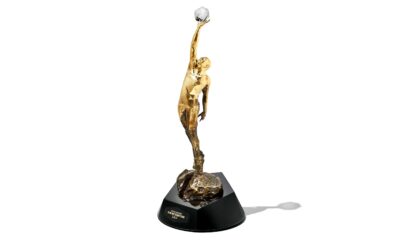

NBA
/ 12 hours agoBSP NBA Awards Ballot 2024
The NBA regular season has concluded officially, with the play-in games finishing off last...
By Matt Strout -
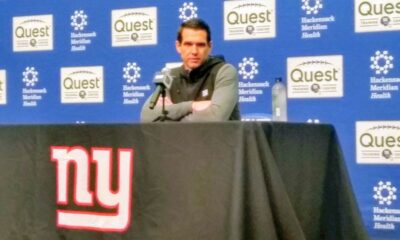

Big Blue Report
/ 1 day agoGiants Are On The Clock
In a press conference held on Thursday, New York Giants General Manager Joe Schoen...
By Randy Zellea -
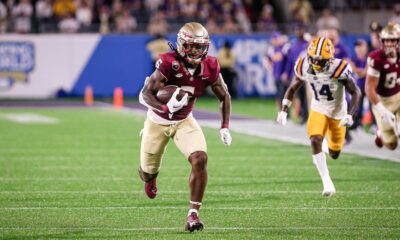

College Football
/ 1 day agoNFL Draft 2024 Scouting Report: Jaheim Bell, TE, Florida State
Jaheim Bell, TE, Florida State Height: 6’2” Weight: 241 Hand Size: 9 ⅞ ...
-
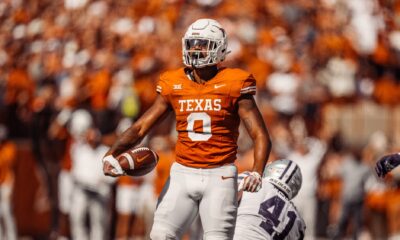

College Football
/ 1 day agoNFL Draft 2024 Scouting Report: Ja’Tavion Sanders, TE, Texas
Ja’Tavion Sanders, TE, Texas Height: 6’4” Weight: 252 Hand Size: N/A Arm Length:...


